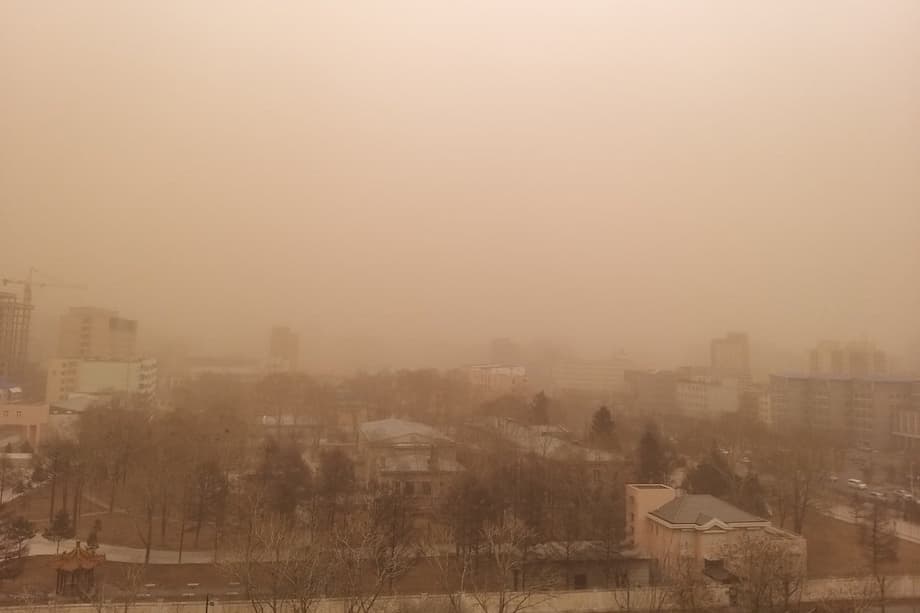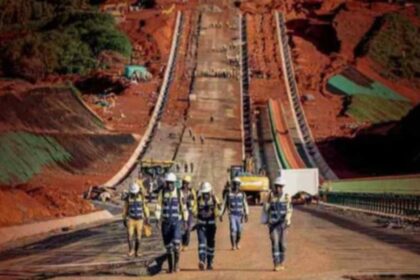China and Mongolia’s Ambitious Plan to Halt the March of the Desert
China and Mongolia are embarking on a landmark environmental collaboration: the potential expansion of China’s famed “Great Green Wall” across their shared border. This joint effort aims to combat the relentless advance of desertification and the increasingly severe sandstorms that threaten not only their own lands but the broader East Asian region. With nearly 80 percent of Mongolian land already degraded and northern China facing persistent ecological challenges, the stakes could not be higher.
- China and Mongolia’s Ambitious Plan to Halt the March of the Desert
- What Is the ‘Great Green Wall’?
- Why Expand the Great Green Wall into Mongolia?
- Desertification: Causes, Consequences, and Global Context
- China’s Achievements and Innovations in Combating Desertification
- Transnational Politics and Local Realities: China-Mongolia Cooperation
- Global Significance and International Cooperation
- Looking Ahead: Can the Green Wall Hold Back the Desert?
- In Summary
Desertification—the process by which fertile land becomes desert—has become one of the most pressing environmental crises of our time. It jeopardizes food security, displaces communities, and fuels regional instability. For China and Mongolia, the Gobi Desert is both a shared natural wonder and a formidable adversary, generating dust storms that sweep across borders and impact millions.
What Is the ‘Great Green Wall’?
The “Great Green Wall,” officially known as the Three-North Shelter Forest Program, is one of the world’s largest ecological engineering projects. Launched in 1978, its goal is to create a vast, human-planted forest belt stretching thousands of kilometers across northern China. This green barrier is designed to halt the expansion of the Gobi Desert, protect agricultural lands, and shield cities from sandstorms.
By 2050, the project aims to cover over 400 million hectares—about 42 percent of China’s land area—with forests, grasslands, and shelterbelts. Already, the program has increased China’s forest coverage from less than 10 percent in 1949 to nearly a quarter of its territory today. The initiative has also inspired similar efforts globally, including Africa’s own Great Green Wall across the Sahel.
How Does the Great Green Wall Work?
The project relies on large-scale planting of trees and shrubs, the construction of windbreaks, and the restoration of grasslands. In some areas, innovative techniques like straw checkerboards are used to stabilize sand dunes and reduce wind erosion. More recently, China has integrated high-tech solutions such as AI-driven tree planting robots and solar-powered afforestation, combining renewable energy with ecological restoration.
These efforts have led to the creation of the world’s largest man-made forest in Saihanba, the greening of the Kubuqi Desert, and the completion of a 3,046-kilometer green belt encircling the Taklamakan Desert. The frequency and severity of sandstorms in northern China have declined, and millions of hectares of degraded land have been rehabilitated.
Why Expand the Great Green Wall into Mongolia?
Mongolia faces a desertification crisis of its own. Nearly four-fifths of its territory is degraded, with overgrazing, climate change, and unsustainable land use driving the loss of fertile soil. The Gobi Desert, which straddles the China-Mongolia border, is a major source of the dust storms that regularly blanket Beijing and other East Asian cities in yellow haze.
In recent years, scientific collaborations between China and Mongolia have intensified. The two countries have established the China–Mongolia Desertification Prevention and Control Cooperation Centre and are exploring joint research, technology transfer, and coordinated afforestation efforts. Mongolia’s “One Billion Tree” movement, launched in 2021, aims to plant a billion trees by 2030, with Chinese support in expertise and resources.
Expanding the Great Green Wall into Mongolia could create a transnational ecological security barrier, reducing the frequency and intensity of sandstorms, protecting livelihoods, and fostering regional stability. However, the endeavor also raises complex questions about environmental policy, local traditions, and the long-term sustainability of large-scale afforestation.
Desertification: Causes, Consequences, and Global Context
Desertification is not unique to China and Mongolia. According to the United Nations Convention to Combat Desertification (UNCCD), up to 40 percent of the world’s land is already degraded, affecting half the global population. Every second, four football fields of land degrade into desert, threatening food security and driving mass displacement.
Major causes include:
- Climate Change: Rising temperatures and prolonged droughts reduce soil moisture and vegetation cover.
- Overgrazing: Excessive livestock numbers strip grasslands bare, exposing soil to erosion.
- Deforestation: Cutting down trees for fuel or agriculture removes natural windbreaks and destabilizes soil.
- Unsustainable Agriculture: Intensive farming depletes soil nutrients and accelerates erosion.
- Urbanization: Expanding cities encroach on arable land and disrupt natural ecosystems.
The consequences are severe: loss of biodiversity, declining agricultural productivity, water scarcity, poverty, and increased risk of conflict over dwindling resources. Dust storms originating in the Gobi and Taklamakan deserts can travel thousands of kilometers, affecting air quality and public health as far away as Japan and Korea.
China’s Achievements and Innovations in Combating Desertification
China’s anti-desertification drive is a story of both remarkable progress and ongoing challenges. Since the launch of the Three-North Shelterbelt Forest Program, China has rehabilitated over 53 percent of its treatable desertified land, achieving zero net growth in land degradation and a net reduction of 4.33 million hectares of degraded land. The country’s forest coverage and stock volume have risen for 40 consecutive years, making it the world leader in afforestation and forest resource growth.
Key achievements include:
- Encircling the Taklamakan Desert: A 3,046-kilometer green belt now surrounds China’s largest desert, stabilizing sand dunes and protecting nearby communities.
- Saihanba Forest: Once a barren wasteland, Saihanba is now the world’s largest man-made forest, providing timber, recreation, and carbon sequestration.
- Kubuqi Desert Transformation: Innovative approaches have turned parts of the Kubuqi Desert into productive land, supporting agriculture and renewable energy.
- Technological Innovation: AI-driven robots, drone seeding, and mechanized planting have increased efficiency and survival rates of new forests.
China’s approach integrates ecological restoration with economic development. Desert tourism, cultivation of medicinal herbs, and agrivoltaics (combining solar power with agriculture) have created new sources of income for rural communities. The government has also enacted the world’s first law on sand control and incorporated desertification prevention into its legal framework.
Challenges and Criticisms
Despite these successes, the Great Green Wall faces significant hurdles. Scientific reviews highlight that monoculture plantations—planting a single tree species over vast areas—can lead to low survival rates, reduced biodiversity, and increased vulnerability to pests and disease. Water scarcity is a persistent problem, as large-scale afforestation can deplete groundwater and compete with agriculture for limited resources.
Some policies have inadvertently harmed local communities, especially pastoralists whose traditional grazing lands have been enclosed or converted to forests. Critics argue that the project does not fully address the socioeconomic drivers of desertification, such as overgrazing and unsustainable farming practices. In some regions, competition for land has led to conflicts, and the long-term sustainability of artificial forests remains uncertain.
Recent studies suggest that while tree planting has contributed to reduced sandstorms, changes in rainfall patterns and controls on grazing have played an even larger role. Experts caution that afforestation alone cannot offset the impacts of climate change, and that a more holistic, nature-based approach is needed.
Transnational Politics and Local Realities: China-Mongolia Cooperation
The expansion of the Great Green Wall into Mongolia is as much a diplomatic endeavor as an ecological one. Environmental issues like dust storms have become central to Mongolia’s relations with its neighbors, especially China. While official rhetoric emphasizes friendship and cooperation, popular narratives in China sometimes blame Mongolia for dust storms, highlighting Mongolian environmental degradation while downplaying China’s own consumption of Mongolian resources.
Scientific collaborations have increased, with China positioning itself as a global leader in desertification prevention. The China–Mongolia Desertification Prevention and Control Cooperation Centre formalizes joint research and technology transfer, supporting Mongolia’s afforestation goals. However, there are concerns about the compatibility of China’s top-down, technocratic approach with Mongolia’s pastoralist traditions and local livelihoods.
Experts suggest that instead of simply importing Chinese anti-desertification models, Mongolia could benefit more from policies that support sustainable livestock management and increased meat exports to China. This would help reduce overgrazing and land degradation, offering more sustainable benefits for rural communities.
Voices from the Frontlines
On the ground, the fight against desertification is both a daily struggle and a source of pride. In Gansu province, 78-year-old farmer Wang Tianchang and his family have spent decades planting hardy bushes and trees on the edge of the Gobi Desert. Their efforts have transformed barren dunes into green oases, inspiring volunteers and symbolizing the country’s determination.
Yet, many local farmers remain skeptical. Despite decades of effort, the sand still moves, and pastures have deteriorated due to declining rainfall. As one farmer put it,
“Without rain, tree planting cannot succeed, and the struggle against the desert continues.”
Global Significance and International Cooperation
China’s experience has become a model for other countries battling desertification. The United Nations and international leaders have commended China’s leadership, innovation, and willingness to share knowledge. China has established research centers, hosted international forums, and provided technology and training to countries in Africa, the Middle East, and Central Asia.
At the 16th session of the Conference of the Parties (COP16) of the UNCCD, China’s achievements were showcased, including AI tree planting robots and large-scale ecological restoration projects. The country has also aligned its efforts with global initiatives like Africa’s Great Green Wall and the Middle East Green Initiative.
Desertification remains a global crisis, with nearly half of the planet’s land at risk. The restoration of degraded land is essential for food security, climate resilience, and sustainable development. China’s and Mongolia’s joint efforts could serve as a blueprint for transnational cooperation, demonstrating that environmental challenges know no borders.
Looking Ahead: Can the Green Wall Hold Back the Desert?
The expansion of the Great Green Wall into Mongolia represents a bold experiment in ecological diplomacy and environmental engineering. Success will depend on careful adaptation of Chinese models to Mongolian conditions, respect for local traditions, and a commitment to sustainable land management. Integrating scientific innovation with community involvement, economic incentives, and international cooperation will be key.
As climate change accelerates and the world’s deserts continue to expand, the lessons learned in the Gobi may shape the future of land restoration efforts worldwide. The struggle against desertification is far from over, but the determination of China, Mongolia, and their partners offers hope that the tide can be turned.
In Summary
- China and Mongolia are considering expanding the Great Green Wall to jointly combat desertification and sandstorms across their shared border.
- The Great Green Wall is the world’s largest afforestation project, aiming to halt the expansion of the Gobi Desert and protect communities from dust storms.
- Desertification affects nearly 80 percent of Mongolian land and significant areas of northern China, with global implications for food security and climate resilience.
- China’s efforts have led to increased forest coverage, reduced sandstorms, and innovative approaches like AI-driven afforestation and agrivoltaics.
- Challenges remain, including water scarcity, monoculture plantations, and the need to balance ecological restoration with local livelihoods.
- International cooperation and adaptation to local conditions are essential for the success of transnational projects like the expanded Great Green Wall.
- The fight against desertification is a global challenge, requiring sustained commitment, innovation, and collaboration across borders.












